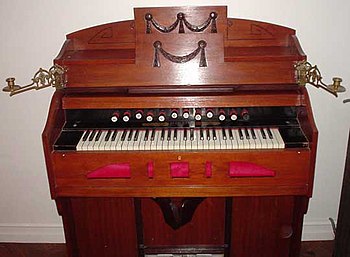Johann Sebastian Bach
(Photo credit: Wikipedia)
Would you like to learn to play organ chorale fantasy "Komm Heiliger Geist, BWV 651 by Bach? If so, you will need to know the exact steps which will help you master this fantastic composition. In this article, I will share with you my recommendations on how to learn to play this piece and be ready for public performance.
Step 1 - Analyze the piece. In this step, you will have to analyze the key, the texture, compositional techniques used and tonal plan of the piece. This will help you to understand how the piece is put together.
Step 2 - Write in fingering. Writing in fingering will help you to know exactly which fingers to use. This will definitely prevent many mistakes which would occur if you play with accidental fingerings.
Step 3 - Write in pedaling. In this step, you will need to know the rules of Baroque pedaling techniques. Early pedaling for Baroque pieces is different from the Romantic and modern pedaling techniques.
Step 4 - Ornaments. This step is very crucial if you want to play this piece in the Baroque style.
Step 5 - Articulation. Even more than the previous step, correct articulation will make your playing sound stylistically appropriate. Note that Baroque music generally is not played legato.
Step 6 - Tempo. With this step, you have to understand the correct ideal tempo for the performance of this piece and for practicing this composition. You have to also take into consideration the acoustics of the room which will determine the exact tempo for performance.
Step 7 - Registration. In this step, you will need to know which stops to use both for practicing this piece and which kind of stop combinations to use for concert performance or church service. The registration will be different on various types of organ - large or small.
Step 8 - Practice the piece. In this step, you will actually start practicing this composition. You will have to figure out the way to practice efficiently and effectively. This will allow you to learn this piece and be ready for public performance in the shortest amount of time possible.
Step 9 - Memorization. Memorizing this piece is optional and you don't need to perform this piece in public from memory. However, I strongly recommend for you to memorize it because this will help you truly perfect this fantastic composition and advance to a whole new level of mastery even if you choose to play it from the score.
Apply my tips in your practice and this will help you to master organ chorale fantasy "Komm Heiliger Geist", BWV 651 by Bach. I am sure you will have much fun perfecting the piece. This will definitely help you to advance in organ playing.
|








